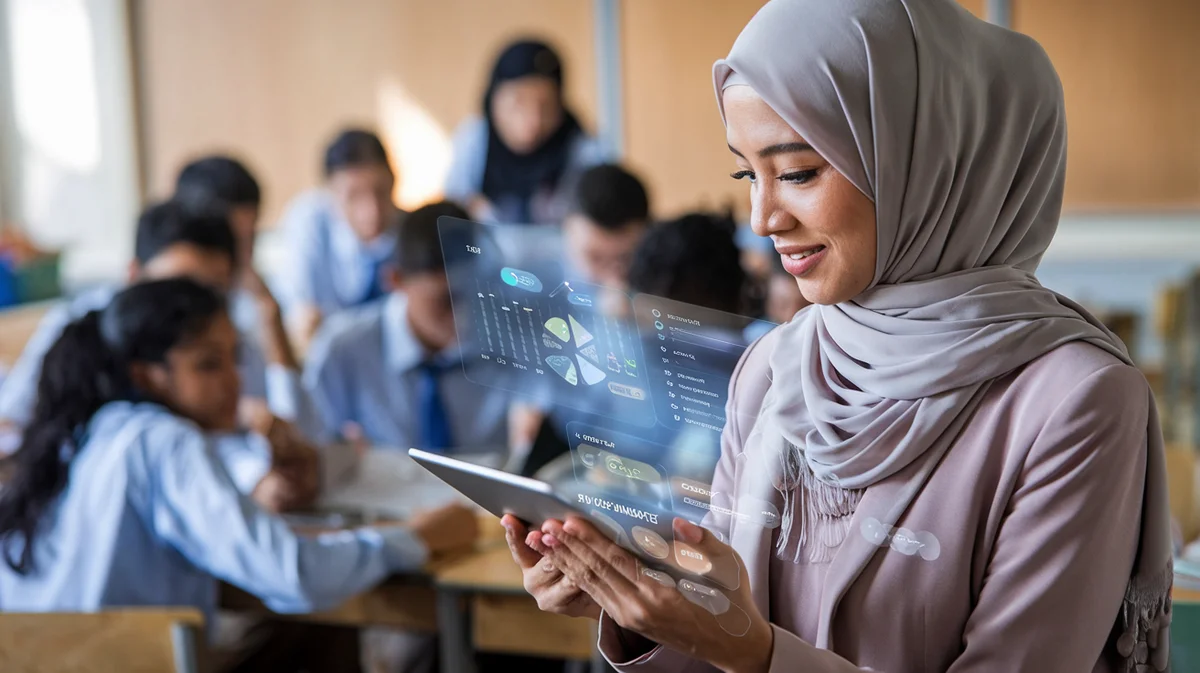Grants and Subsidies for School STEM Labs


wp:paragraph
Empowering educators to create a brighter future for all students starts with access to world-class STEM labs. At UNOWA, we are dedicated to transforming learning experiences by helping schools, ministries, and education partners unlock the full potential of grants and subsidies for STEM innovation. Here, we share the latest insights, funding opportunities, and proven strategies to help you secure stem grants for schools and build inclusive, future-ready STEM labs.
/wp:paragraph
wp:heading {"level":2}
The Evolving Landscape of STEM Lab Funding
/wp:heading
wp:paragraph
Across the EU, MENA, and CIS regions, investment in STEM education is a top priority. Governments and international organizations recognize that modern, well-equipped STEM labs are vital for preparing students for tomorrow’s workforce. Recent policy shifts and funding programs are making it easier than ever for schools to access resources, with a strong focus on inclusivity, digital transformation, and public-private partnerships.
/wp:paragraph
wp:heading {"level":3}
Key Facts and Statistics
/wp:heading
wp:list
- The EU’s STEM Education Strategic Plan (2025) integrates policy coordination and skills intelligence, ensuring funding aligns with industry needs.
- Major EU funding sources include the Recovery and Resilience Facility, Cohesion Policy Funds, Erasmus+, Horizon Europe, and the Digital Europe Programme.
- Horizon Europe’s 2025 Work Programme allocates €7.3 billion to research and innovation, directly supporting education infrastructure.
- The “Choose Europe for Science” initiative will invest €500 million between 2025 and 2027, with a target for member states to allocate 3% of GDP to R&D by 2030.
- ERC Advanced Grants offer up to €2 million per researcher for collaborative projects, benefiting schools engaged in research-driven STEM initiatives.
/wp:list
wp:heading {"level":2}
Funding Opportunities by Region
/wp:heading
wp:heading {"level":3}
EU: Bulgaria, Malta, Poland, Latvia, Lithuania, Estonia, Serbia
/wp:heading
wp:paragraph
Schools in these countries can access a range of stem grants for schools through:
/wp:paragraph
wp:list
- EU Structural Funds: Support for infrastructure, equipment, and digital tools.
- Erasmus+: Funding for educational partnerships, teacher training, and student exchanges.
- Horizon Europe: Grants for research-driven STEM projects and innovative lab solutions.
/wp:list
wp:paragraph
National governments are encouraged to align with the EU’s target of dedicating 3% of GDP to R&D by 2030, opening further opportunities for local and regional funding.
/wp:paragraph
wp:heading {"level":3}
MENA: Saudi Arabia, UAE, Qatar, Oman
/wp:heading
wp:paragraph
While not direct EU beneficiaries, MENA countries often partner with EU institutions and participate in international STEM initiatives. National programs focus on:
/wp:paragraph
wp:list
- Digital transformation and STEM: Significant government and private sector investment in modernizing education.
- International partnerships: Collaboration with global organizations to enhance STEM curricula and infrastructure.
/wp:list
wp:heading {"level":3}
CIS: Kazakhstan, Uzbekistan, Armenia, Moldova, Azerbaijan, Kyrgyzstan, Georgia
/wp:heading
wp:paragraph
CIS countries are increasingly participating in EU-funded programs via association agreements and regional partnerships. National reforms are underway to:
/wp:paragraph
wp:list
- Modernize STEM curricula and infrastructure: Often with support from international donors.
- Promote inclusive education: Ensuring access for all students, including those with special educational needs.
/wp:list
wp:heading {"level":2}
Navigating the Application Process
/wp:heading
wp:heading {"level":3}
EU Funding
/wp:heading
wp:paragraph
Schools typically apply through national agencies or directly to EU calls, such as Erasmus+ or Horizon Europe. Successful proposals:
/wp:paragraph
wp:list
- Align with strategic priorities (e.g., digital skills, inclusion, industry collaboration).
- Demonstrate measurable impact on learning outcomes.
- Involve partnerships with other institutions or industry.
/wp:list
wp:heading {"level":3}
MENA and CIS
/wp:heading
wp:paragraph
Application processes vary but often involve ministries of education, international organizations, or direct partnerships with EU programs. It’s essential to:
/wp:paragraph
wp:list
- Consult local education authorities for specific guidelines.
- Build strong, cross-sector partnerships to strengthen proposals.
/wp:list
wp:heading {"level":2}
Building Inclusive and Future-Ready STEM Labs
/wp:heading
wp:paragraph
Inclusive STEM education is at the heart of today’s funding priorities. This means:
/wp:paragraph
wp:list
- Ensuring gender balance and accessibility for all students.
- Integrating digital skills, AI, robotics, and other cutting-edge technologies.
- Prioritizing scalable, innovative solutions that can be adapted to local needs.
/wp:list
wp:paragraph
Public-private partnerships are especially encouraged, ensuring that labs are equipped with the latest technology and aligned with workforce demands.
/wp:paragraph
wp:quote
“The role of science in today’s world is questioned. What a gigantic miscalculation. I believe that science holds the key to our future here in Europe. Without it, we simply cannot address today’s global challenges — from health to new tech, from climate to oceans.” — Ursula von der Leyen, President of the European Commission
/wp:quote
wp:heading {"level":2}
Professional Advice for Securing STEM Grants
/wp:heading
wp:list
- Align with Strategic Priorities: Tailor your application to address both local needs and broader EU or national strategies.
- Build Strong Partnerships: Collaborate with universities, research centers, and industry to enhance your proposal’s credibility and sustainability.
- Focus on Impact: Clearly articulate how your STEM lab will improve learning outcomes, foster inclusion, and prepare students for future careers.
- Invest in Teacher Training: Funding bodies increasingly value proposals that include professional development for educators alongside equipment purchases.
/wp:list
wp:heading {"level":2}
Regulations and Government Guidelines
/wp:heading
wp:list
- EU Guidelines: Emphasize transparency, accountability, and measurable outcomes for all funded projects.
- National Regulations: May specify procurement, reporting, and evaluation standards — always consult local authorities for details.
/wp:list
wp:heading {"level":2}
Recent Developments
/wp:heading
wp:list
- The EU’s new €500 million “Choose Europe for Science” initiative aims to attract global talent and boost research capacity, indirectly benefiting school STEM labs through increased collaboration and funding.
- Horizon Europe’s 2025 work programme significantly increases available funding for research and education infrastructure, making now an ideal time to pursue stem grants for schools.
/wp:list
wp:heading {"level":2}
Best Practices from Successful Schools
/wp:heading
wp:paragraph
Schools that have successfully secured funding for STEM labs often:
/wp:paragraph
wp:list
- Engage stakeholders early, including teachers, students, and industry partners.
- Invest in teacher training to maximize the impact of new equipment.
- Share results and best practices with the wider education community, fostering a culture of continuous improvement.
/wp:list
wp:heading {"level":2}
Useful Resources
/wp:heading
wp:list
- European Commission: Funding & Tender Opportunities
- Horizon Europe Programme Guide
- Erasmus+ Programme Guide
- OECD: Education Policy Outlook
- UNOWA: Transforming Education
/wp:list
wp:heading {"level":2}
FAQ: Grants and Subsidies for School STEM Labs
/wp:heading
wp:paragraph
Q: What are the main sources of stem grants for schools in the EU? A: The main sources include EU Structural Funds, Erasmus+, Horizon Europe, and national government programs. Each offers different types of support, from infrastructure and equipment to teacher training and research partnerships.
/wp:paragraph
wp:paragraph
Q: How can schools in MENA and CIS regions access international funding for STEM labs? A: Schools can participate in international partnerships, apply for grants through ministries of education, or collaborate with EU-funded projects. Engaging with organizations like UNESCO and the World Bank can also open doors to additional funding.
/wp:paragraph
wp:paragraph
Q: What makes a successful grant application for a STEM lab? A: Successful applications align with strategic priorities, demonstrate clear impact, involve strong partnerships, and include plans for teacher training and sustainability.
/wp:paragraph
wp:paragraph
Q: Are there specific requirements for inclusive STEM education in grant applications? A: Yes, most funding bodies prioritize inclusivity, requiring proposals to address gender balance, accessibility, and support for students with special educational needs.
/wp:paragraph
wp:paragraph
Q: Where can I find more information or support for preparing a grant application? A: Visit UNOWA’s website for expert guidance, or consult your national education authority and the European Commission’s funding portal.
/wp:paragraph
wp:paragraph
At UNOWA, we are committed to empowering institutions, educators, and students through innovative, inclusive, and future-ready educational solutions. Let’s work together to transform learning experiences and unlock the power of STEM for every learner.
/wp:paragraph








